


 Click on the photo to view a larger image.
Click on the photo to view a larger image.NINCO Porsche 356 – Average 9.596s
Wood: 8.986s / Plastic 10.205s / Mass 65g / Magnetic Downforce 3g
The NINCO Porsche 356 I tested is part of NINCO's classic line. It is powered by NINCO's venerable NC1 motor and while it isn't the fastest car in this review, it is one of the better handling cars. The wheels needed to be glued to their axles prior to testing but ran fairly true for plastic wheels. Owing to the length of the straights on my test tracks the lack of grunt from its NC1 held this car back.
SCX Alpine A110 – Average 9.582s
Wood: 8.973s / Plastic: 10.191s / Mass 67g / Magnetic Downforce 17g
SCX produces a plethora of rally cars. The Alpine A110 is a fairly recent example powered by their unique RX41B motor. This car also has working lights. The wheels on my test car were firmly attached to the axles and reasonable true for plastic wheels. This car also ran out of steam on the long straights of my test tracks reaching top speed after about 2m. If I were looking for more speed the first change I would make would be to replace the 9z stock pinon with a 10z as the stock power plant seems to have plenty of grunt. The RX motors only seem to get faster as they wear in.
Scalextric Austin Mini – Average 9.580s
The Mini suffered the opposite problem of the previous two cars in that it is way overpowered for such a tiny model. This model too has working lights. Scalextric most likely chose the slim can FF050 by reason of packaging considerations. Masive power aside, the wheels on my test car are firmly attached and reasonably round. I had to drive this car with care through the corners but could really wind it out on the straights. This car would benefit from a less powerful motor.
SCX Fiat Abarth 124 – Average 9.420s
Wood: 8.741s / Plastic: 10.099s / Mass: 73g / Magnetic Downforce: 10g
Another reasonably powered SCX rally car with working lights. Again, this model was blessed with round wheels and straight axles. The FIAT is another good handling car in the corners that was lacking in top speed. Increasing the pinion tooth count to 10 would help the lap times drop.
NINCO Renault Clio – Average 9.313s
Wood: 8.863s / Plastic: 9.762s / Mass: 67g / Magnetic Downforce: 3g
It seems to me that NINCO used to put the NC1 in just about every car they made. The Clio is no exception. The wheels on this example needed a drop of glue to keep them on their axles. Other than that this car was good to go. A bit more motor or slightly taller gear might have moved this car up in the standings. Still an easy handling easy to drive car.
Fly Porsche 911 – Average 9.245s
Fly's model of this ubiquitous rally car is true to the prototype's motor layout in that it is placed behind the rear axle. Out of the box with the traction magnet removed the car is undriveable. Only with the addition of lead up front was this car tamed. Otherwise its nose was happy to bounce right out of the slot under acceleration.
SCX Lancia Stratos – Average 9.187s
Yet another SCX rally car powered by the RX alphabet soup of motors: this time the RX4. The reasonably true wheels on my example were loose on the axle but this problem was easily fixed with a drop of glue. The Stratos is a small car with a short wheelbase but since it was not overpowered it was an easy driver. Another case where less is more – though I would bump up the pinion tooth count by one if I wanted it to go faster. The nose on this car could use some lowering as well.
Fly Lancia 037 – Average 8.885s
Fly had done for their rally cars what they had also done for classic LeMans prototypes: offering detailed models in a sidewinder configuration with reasonable FC130 black stripe power. My test car had a spur gear that spun on the axle. I decided to forgo attempting to repair the stock gear and swapped out the defective components for Slot Car Corner Canada bushings and a Slot.it gear and axle. The stock wheels were retained. The Lancia 037 is a good looking good handling car that will only get faster with mild tuning.
Fly Lancia Betamontecarlo – Average 8.696s
While this Fly car is also a sidewinder, its sidewinder motor pod chassis has more in common with the Fly Classics line than the one piece chassis of the Lancia 037. What this car did have in common with the 037 was a spur gear that spun on the axle. A similar swap to SCC bushings, Slot.it axle, and red Slot.it 36z spur gear made everything right. A fun car to drive once made to run right.
Scalextric Ford Escort – Average 8.674s
Scalextric brings us another rally car with functioning lights and slim can power. Unfortunately, the crown gear was not up to task in my test car and eventually failed by having a couple sections of the toothed part break away. This is the first time I've experienced a failure like this. While this car ran, it ran great if a tad overpowered.
Fly Renault 5 – Average 8.544s
The Renault 5 is another Fly sidewinder with black stripe power. It is also another car with a spur gear that spun on the axle – and a problem that was fixed by replacing the defective components with the good stuff from SCC and Slot.it. The stock wheels were retained. Once tuned it was a smooth runner and easy to drive at the limit.
Spirit BMW 1602 – Average 8.244s
I have to admit that I have a love-hate relationship with Spirit cars. I love some of Spirit's design ideas and the subjects they choose to model. I hate their choice of materials and components. A problem I consistently have with Spirit cars is that any setscrews installed from the factory tend to strip at the first twist of my hex driver. Consequently, the first thing I do when race tuning a Spirit car is replace all their setscrews with Slot.it parts. When I tried to remove the setscrews used to set the front axle height on this car the axle carrier broke right off. I ended up hot-gluing a brass tube onto the BMW's chassis to carry the front axle. Of course, the crown gear's setscrew was stripped. Once the factory's mistakes were fixed, the Spirit BMW turned out to be a barn burner. It was the fastest of all the cars on wood or plastic. The open can FK180 used in this car generates 36g of downforce and sits in an adjustable motor pod. The driver's side mirror was the first casualty of my spirited driving – not something that will be needed given the outright speed of this car once sorted vs. the competition.
Thank-you to Mini Grid and Race Haven Hobbies for the use of the test facilities and to Art Tschinkel for being able to provide me with his superb DArts tires to suit each of the models in this test.
Van LaPointe
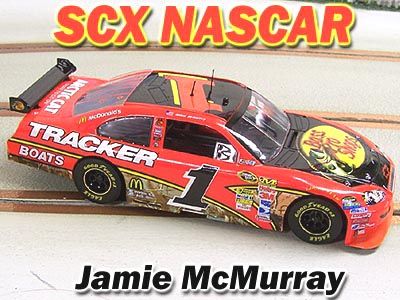
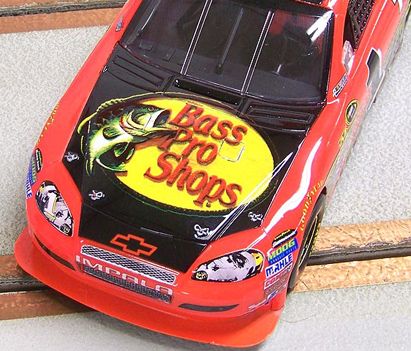
By M.G. Brown

Most 1/32 and 1/24 racers in North America are familiar with the “True Scale Racing” line of chassis, motors and parts distributed by Topline, Inc of California. The “TSRF” cars have been on the market for a good 2 years now but until now there has not been a true “ready to race” 1/32 TSRF car that was suited for sectional tracks such as you would find in the average slot racing enthusiast’s basement or garage.
That has all changed now with the introduction of the first Pro Series RTRs in TSRFs line.
The initial RTR body style is the Sunred SR21 GT; it is available in 3 decorations representative of the cars as they were raced in the “GT Open” series during 2008. Topline informs me that around the end of January, a Riley Daytona prototype body style will be added to the TSR Pro Series line in a number of decorations.
TSRF spokesperson and Slot racing legend Philipe de Lespinay has published a comparison of the TSRF Pro Series RTR performance versus other popular 1/32 RTR cars. The test was done on Carrera sectional track, and the Pro Series car packaging states that it is optimized (as purchased) for Carrera track. With small modifications, the TSRF Pro Series RTR can be adjusted to run well on any sectional track system, and also on routed (wood) track.
Since PdL has done a fine job testing the car on sectional track about the size and layout that the average racer might have in their home, and since I have the track that the 2010 ISRA World Championships was contested on at my disposal, I felt it would be interesting to test the TSRF Pro Series RTR on Mid-America Raceway and Hobbies Gary Gerding built 148 foot “Monster” flat track.
Please note that this is not the type of track or environment that the car was designed, or is optimized for.
In the greater Chicago area, we have just started racing 1/32 RTR cars weekly at Mid-America Raceway. After a few weeks of sorting through the RTR offerings of several companies, the Slot.it Group C “RAW” cars seem to be the overwhelming favorite. I feel that the Slot.it RTRs are clearly the benchmark that the new TSRF Pro Series must be measured against.

TSR chassis design overview
Both the 1/32 and 1/24 TSR cars are similar in design- A two piece chassis with a metal “body mounting pan” and a glass-filled plastic center section that neatly ties together all of the electrical and mechanical components. Three possible choices of chassis locations and three front axle locating holes make the mounting of most any 1/32 injection molded or clear plastic body a snap.
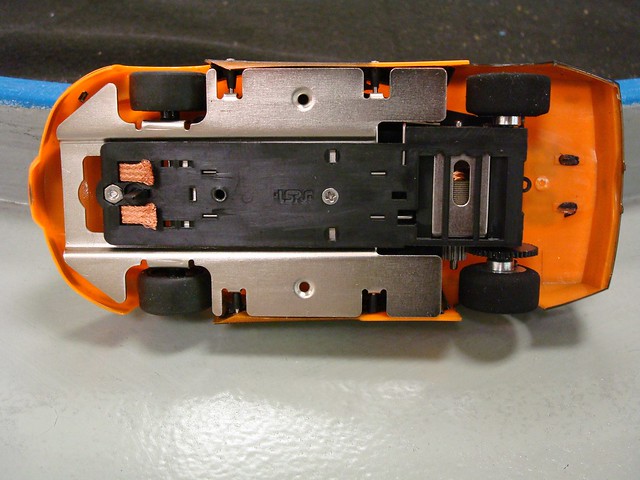
When first introduced on the market the purchaser had the choice of a standard model with glass-filled plastic wheels and spur gear, or a “Club Sport” model that had alloy wheels and gear. TSRF offers 3 tire compounds; a standard “gevon” compound, a custom Ortmann compound and a sponge rubber tire. The gevon and Ortmann tires are intended to be used on the plastic wheels or the Club Sport alloy wheels, while the sponge compound is intended to be used on the alloy setscrew wheels.
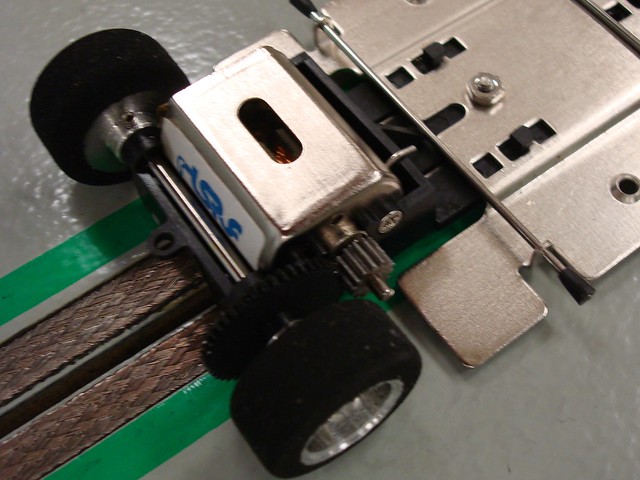
The motor in all TSRF cars is a “FK-130” series sealed can imported from China with a milder wind than the TSRF FK D3 racing motors.
The SCNews motor list rates the TSR “Nickel” motor as used in the Pro Series RTR at a stout 36,700 RPM at 12V DC. Please note that the design of the TSR Pro Series chassis allows the easy installation of any popular FK series motor including the 47,600 RPM TSRF “D3” motor. Removal of two screws and the motor swaps out quite simply- the “bus bar” wiring system does not even require soldering to change motors.
The TSR Pro Series RTR comes standard with silky smooth 64 pitch gears; the standard spur is glass-filled plastic with 45 teeth. The standard pinion is stainless steel with 14 teeth giving a 3.21:1 ratio. Optional alloy setscrew gear sets are available including 14-45, 13-46, 12-47, and 11-48.
An ongoing source of controversy is the “pin” guide and fixed pickup brush system that is used on the TSR cars. I have had a background in HO Scale racing with the Tri-State HOPRA going back some years. I am not sure why there has been such uncertainty about the TSR system, which is clearly based on the design used successfully in race-winning HO “pro” cars for at least 30 years.
The TSR pickup brushes are captured in place by a clever screw-mount bracket, which I feel makes pickup brush changing and adjustment much easier than the eyelet - wire system universally used by other high performance RTR companies.
The TSR Pro Series RTR comes with an indestructible stainless steel guide pin, and optional nylon guide pins are available in “standard” (suitable for sectional track) and “deep” (suitable for routed track) styles. I prefer the nylon deep guide for use on commercial tracks and that is how our test car was equipped.
My favorite feature of the TSR chassis is the clever front axle and wheel/tire setup. The wheel assemblies rotate independently on a solid axle that is attached to the steel body mount plate. Small “E” clips securely hold the wheels in place on the axle from the outside. Once in place, the front end has a very precise alignment and the wheels spin freely.
All chassis components- down to the motor retaining screws and chassis movement adjusting bolt are available from TSRF as spare parts. The 64 pitch gear sets have become popular for replacement use on Fly Classic sidewinders but I am assured that there is ample stock for spares.
I feel the TSR chassis is a joy to work with and it can be totally disassembled and re-assembled using only a Phillips screwdriver in a matter of minutes. In a lot of ways the TSR chassis reminds me of a well-made musical instrument in the way things fit together with close tolerances.
TSR RTR Body Overview
The sharp-eyed among our readers have probably already guessed that the TSR Pro Series RTR is using the Flyslot “Madness” body.
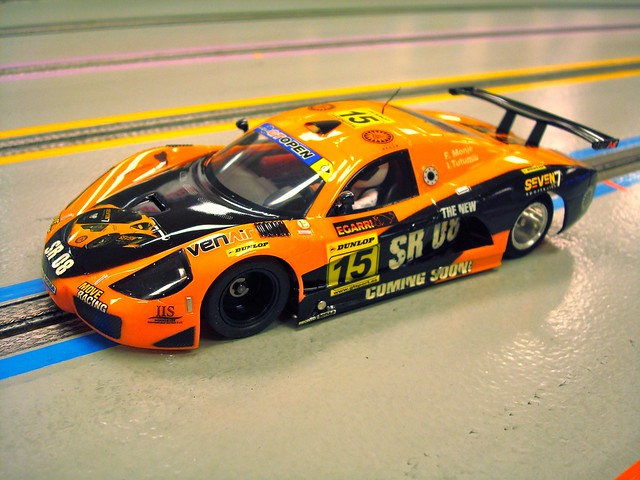
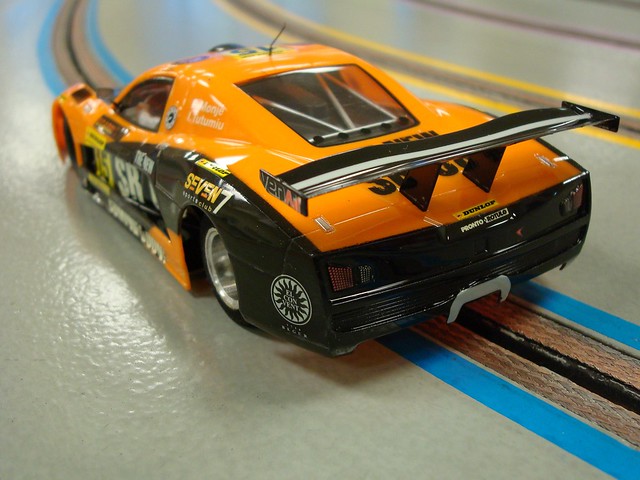
There are varying opinions of the aesthetic appeal of the Sunred SR21’s lines, but for racing purposes it is an excellent choice. The body weighs in at an astonishing 22 grams complete with all exterior detail, “tray” interior and half-figure driver. Considerable un-needed weight could be trimmed from the underside of the body and interior tray at no sacrifice in realism if you so desire.
The windows are molded into the body much the same as Tamiya’s RC “hardbodies” so what weight is on the body is largely below the centerline. I'd love to know how they do this- it's fascinating to examine.
The mounting is the tried and true tube and pin system universally used by 1/24 “pro” racers around the world. It is quick and easy to remove the body without tools and without the fear of stripping or breaking the plastic screw posts as found on other 1/32 RTRs.
Track Test
Since the Mid-America Raceway and Hobbies “Monster” track is used mostly for 1/24 scale racing, it has a thin film of spray traction dressing on its surface- making sponge tires mandatory for best speeds.
For these tests the Pro Series standard Ortmann tires were initially replaced with TSRF sponge tires on alloy setscrew wheels. The tires were first trued and brought to the exact diameter of the Ortmann tires to eliminate any performance differences due to clearance etc.
I felt that the TSRF sponge tires were just a bit soft for the track conditions and after some experimenting, found the best lap times could be achieved with the “spec” tire that we use in our 1/32 RTR weekly racing; the Scale Auto “Red Stripe large hub”. The Scale Auto tires are a slightly harder compound and were trued to the same diameter as mentioned above.
Experimentation also found that the TSR Pro Series handled more consistently with weight placed in ahead of the guide on the metal body mount. Interestingly there is a recessed area on the body mount which seemed to be custom made for weight placement.
Once the tire and weight issues were sorted out- we got down to finding out exactly what this new offering could do.
The fastest Slot.it “RAW” cars in our 1/32 racing series are hovering right around a 9.1 second lap (16.26 FPS) after weeks of tuning and adjusting.
With a tire change and weight tuning, the otherwise stock TSR Pro Series was turning comfortable 9.8 second laps (15.10 FPS).
I felt that the stock gear ratio was holding the car back from faster lap times on our relatively large track, but as is, the TSR Pro Series felt very smooth and consistent. A tester noted that the car was quiet and easy to drive consistently lap after lap.
I am sure that additional tuning might gain at least two tenths of a second with gear changes bringing another two tenths- putting the basically stock car in the same grouping with our fastest Slot.it “RAW” cars.
We probably ran over 200 laps in testing with the TSR Pro Series car and the only issue was that the left side mirror was knocked off of the body during a particularly hard contact with the wall. The mirrors are apparently designed to pop out of the body on hard contact and it popped back in to its holder easily (once the errant part was located!) with a satisfying click.
I noticed after the testing that one of the rear wing support struts had been slightly bent from crash damage; but this is a well-documented problem with the Flyslot “Madness” cars- and easily fixed with some 3-M filament reinforcing tape.
Overall I feel the TSR Pro Series RTR offers a lot of value for both the home racer and the commercial track competitor. We plan a 24 Hour enduro in the near future at Mid-America, and I feel that this will be the true test of the TSR-RTR.
I will be sure to publish an update after the enduro for the Slot Cars Blog readers.

T3210(x)S TSRF Pro Series RTR available in Orange (3), Red (4) and White (5) decoration.
$109.95 + Postage
Available from tsrfcars.com, electricdreams.com and other TSRF retailers.

Super Tires (R) are now available for the popular Carrera F1's! Initially available in a urethane ("Yellow Dog") compound, they will also be available in a silicone compound shortly. Part number and dimensions are as follows:
Available for purchase immediately - please click here for more information.

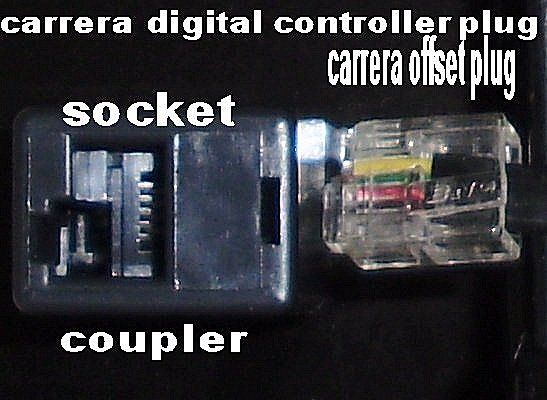 The sold by SLOT32 extends controller lead by 3 meters! See this link for more information (the listing is at the bottom of the page).
The sold by SLOT32 extends controller lead by 3 meters! See this link for more information (the listing is at the bottom of the page).